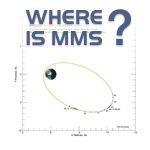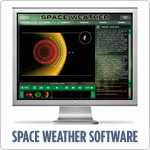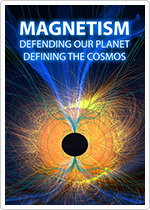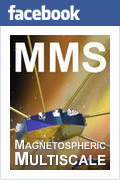LATEST MISSION NEWS | OLDER MISSION NEWS
OLDER MISSION NEWS
2014
- Mission Highlights - December 19, 2014:
- 3 of the 4 Navigator unit are now installed on Observatories with the 4th being hand-carried down from GSFC today.
- All Solar Array cell inspections are complete.
- The MMS Project supported the Launch Vehicle Readiness Review (LVRR) at KSC this week.
- The Mission Operations Center (MOC) and Flight Software Sustaining engineering (FSSE) teams successfully completed dry-run the Observatory Flight Software (FSW) installation procedures on the spacecraft FlatSat in preparation for the actual FSW patches to the Observatories scheduled for next Monday.
- Mission Highlights - November 20, 2014
- All four MMS Observatories are now at Astrotech at CCAFS and the Functional Test of Observatory #4 is in progress this week. Launch site operations continue to proceed smoothly and on schedule. The Flight Operations Review/Operational Readiness Review (FOR/ORR) was completed this week. The Mission Operations Center (MOC) and Flight Software Sustaining Engineering (FSSE) teams successfully completed the remaining MRT-25 series to remotely load the operational flight keys to Observatories #3 and #4. The Space Network (SN) and MOC teams successfully completed the SN newly installed automated ground scheduling software. The MOC also successfully completed the Backup MOC telemetry and command interface and data flow test with WSC Programmable Telemetry Processors (PTPs).
- Mission Highlights - November 13, 2014
- All four MMS Observatories are now at Astrotech and preparations for Functional Testing of Observatories #3 and #4 are ongoing. Solar Array cell inspections are also ongoing with the vendor supporting on-site at Astrotech. All operations at the launch site continue to go very smoothly.
- Mission Highlights - October 16, 2014
- The investigation into the recent Observatory #4 Side A Navigator (weak signal GPS system) anomaly has revealed a failure in a RAM-3 RF amplifier microcircuit in the same circuit location as had been previously experienced. A weakness in the design that stresses the part in this particular circuit location has now been identified that was not understood previously. A rework plan for all four Navigators is being validated by testing on the ETU and evaluation boards. All four will be removed, reworked, and reintegrated at the launch site. No impact to shipping or launch date.
- Mass properties/spin balance is complete on Observatories #1, #2 and #4 with #3 in progress this week.
- Mission Readiness Test #17 (MRT17), a series of instrument operation and commissioning activity rehearsals, was completed this week.
- Thermal Blanket closeouts and final metrology work continued this week on all Observatories.
- Mission Highlights - September 18, 2014
- MMS Observatory #1 completed mass properties testing and spin balance with excellent results well within allocations.
- 3 of 4 MMS Observatories now have Solar Arrays installed for flight.
- MMS Observatory #2 will complete final Comprehensive Performance Testing (CPT) Friday.
- A Launch and Early Orbit simulation with contingencies was completed last weekend using all four Observatories and with TDRSS and KSC participation.
- Mission Highlights - September 11, 2014
- MMS Observatory #1 is in mass properties/spin balance testing in the MMS 160 cleanroom.
- MMS Observatory #2 is completing Magnetometer Boom deployment testing and is being prepared for its final Comprehensive Performance Testing (CPT).
- MMS Observatory #3 had its Navigator reintegrated.
- MMS Observatory #4 is being utilized for Mission Readiness Test #17 (MRT) (Instrument commissioning and operation) this week.
- All four MMS Observatories will be configured and used for this weekend's launch simulation MRT which will include TDRSS and KSP-LSP participation.
- Mission Highlights - August 14, 2014
- The final acoustic test of Observatory #1 was completed.
- The last of 32 Fast Plasma Investigation (FPI) instruments was integrated onto Observatory #4.
- The second of four re-worked Navigator boxes was integrated to Observatory #4.
- A powered Launch Day simulation using all four MMS observatories was completed.
- Mission Highlights - August 7, 2014
- The Thermal-Vacuum (TVAC) test of Observatory #3 at NRL has been completed with no Observatory issues and the Observatory is now back at GSFC.
- All four MMS Observatories are being prepared for a powered Launch Day Simulation to be conducted Saturday.
- The last 2 of the 16 Spin Plane Double Probes (SDP) were integrated onto Observatory #2
- Preparations for the acoustic tests of Observatories #1 and #2 on 8/11 and 8/16 is in progress.
- Mission Highlights - June 5, 2014
- The Flight Battery was installed and charged on MMS #4 and magnetic cancellation loop test is planned for Friday. Thermal Blanket installation continues in preparation for thermal-vacuum testing on MMS #3. Temperature testing of Propulsion thermostats in progress on MMS #2. The Solar Arrays and a Spin Plane Double Probe (SDP) unit were removed from MMS #1 for planned testing. Alignment and metrology measurements also continued on MMS #1.
- Mission Highlights - May 29, 2014
- Post Stacked Vibration test Functional Test was successfully completed on Observatory #1. Observatory #3 is being prepared for the upcoming thermal-vacuum test with Solar Array installation planned for 5/30 and final flight software load scheduled for next Monday. Post environmental testing work continues on Observatories #2 and #4.
2013
- Working on Four Spacecraft Simultaneously
01.24.13 - NASA's Magnetospheric Multiscale (MMS) mission clean room is buzzing with activity as engineers work on all four observatories at the same time. - Cluster Finds Turbulent Eddies May Warm the Solar Wind
01.08.13 - A new study of data obtained by the European Space Agency's Cluster spacecraft may help explain why the flow of electrically charged particles and magnetic fields from the sun, the solar wind, is hotter than it should be.
2012
- Instrument Deck Installed on MMS Observatory #2
12.13.12 - Installation of the instrument deck is complete on the second of four MMS observatories, which are being assembled at NASA's Goddard Space Flight Center in Greenbelt, Md. - Students Build a MMS Spacecraft Model Using LEGOs©
09.11.12 - With a little help from LEGO® designers, students in West Virginia built a one-foot diameter model of a future NASA mission called the Magnetospheric Multiscale (MMS) spacecraft. - Hidden Portals in Earth's Magnetic Field
07.02.12 - A NASA-funded researcher at the University of Iowa has figured out how to find X-points, places where the magnetic field of Earth connects to the magnetic field of the Sun. - Instrument Integration Begins on MMS Spacecraft
06.08.12 - Engineers working on NASA'S Magnetospheric Multiscale (MMS) mission have started integrating instruments on the first of four instrument decks in a... - NASA Tests Advanced Instrument for Upcoming MMS Mission
05.02.12 - An international group of researchers from four different teams met last week in the United States, to test critical components in an instrument that will be installed on the upcoming NASA Magnetospheric Multiscale (MMS) mission. - Goddard Collaborates With International Partners on MMS Instrument
04.30.12 - During the last week of March, 2012, researchers from Goddard, Marshall, SWRI and Japan came together to test a key instrument for the Magnetospheric... - Spacecraft Cleanroom Goes Green
01.13.12 - MMS mission requirements lead to construction of a new 'Green' cleanroom, where the four identical spacecraft will be assembled and integrated.
2011
- Goddard Building Instrument To Study Reconnection
04.29.11 - At NASA's Goddard Space Flight Center, scientists and engineers are working on a crucial element of the the Magnetospheric Multiscale (MMS) mission to study magnetic reconnection: the Fast Plasma Instrument (FPI).
2010
- Missions, Meetings, and the Magnetosphere Radial Tire Model
10.01.10 - Read through a question-and-answer session with Magnetospheric MultiScale Project Scientist Tom Moore. - NASA's Magnetospheric Mission Passes Major Milestone
09.03.10 - NASA's Magnetospheric Multiscale mission passed its critical design review, which clears the way for spacecraft fabrication. - Announcement of the Magnetospheric MultiScale Interdisciplinary Science team selections
04.05.10 - The MMS IDS (Magnetospheric MultiScale Interdisciplinary Science) team selections have been announced.
2009
- Honey, I Blew Up the Tokamak
08.29.09 - Magnetic reconnection could be the Universe's favorite way to make things explode. It operates anywhere magnetic fields pervade space--which is to say almost everywhere... - NASA's Magnetospheric MultiScale Mission Takes a Step Closer to Solving the Mystery Behind Magnetic Reconnection
07.21.09 - NASA is designing a mission to investigate one of the most fundamental and explosive physical processes in the universe - magnetic reconnection. Known as the Magnetospheric Multiscale (MMS) mission, it was approved for implementation on June 18, 2009 following a successful Preliminary Design Review in May 2009.
2008
- NASA Goddard and University of Idaho Create Solutions for 2 NASA Missions
12.19.08 - Pen-Shu Yeh is a senior engineer at NASA's Goddard Space Flight Center, Greenbelt, Md. and a grant technical officer. She's also the person that helped create unique solutions for data compression for future missions with a team from the University of Idaho (U-Idaho). Those solutions are now going to fly on two of NASA's upcoming missions.
MISCELLANEOUS
- Reconnecting Magnetic Fields - The huge amounts of energy released from the relinking of magnetic fields in
outer space are both mysterious and potentially destructive
James L. Burch and James F. Drake
Reprint from American Scientist the magazine of Sigma Xi, The Scientific Research Society






